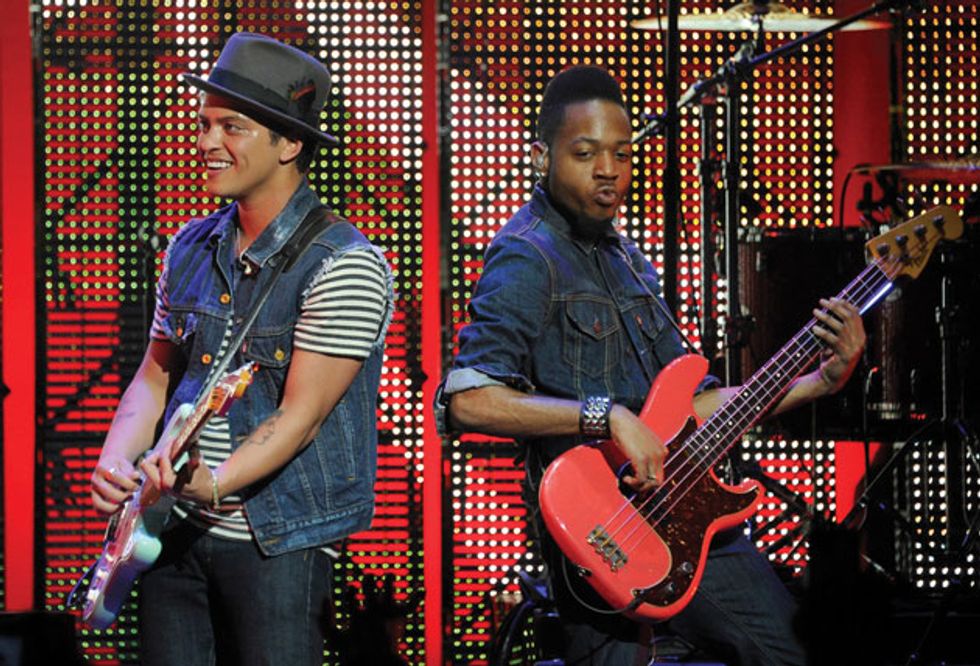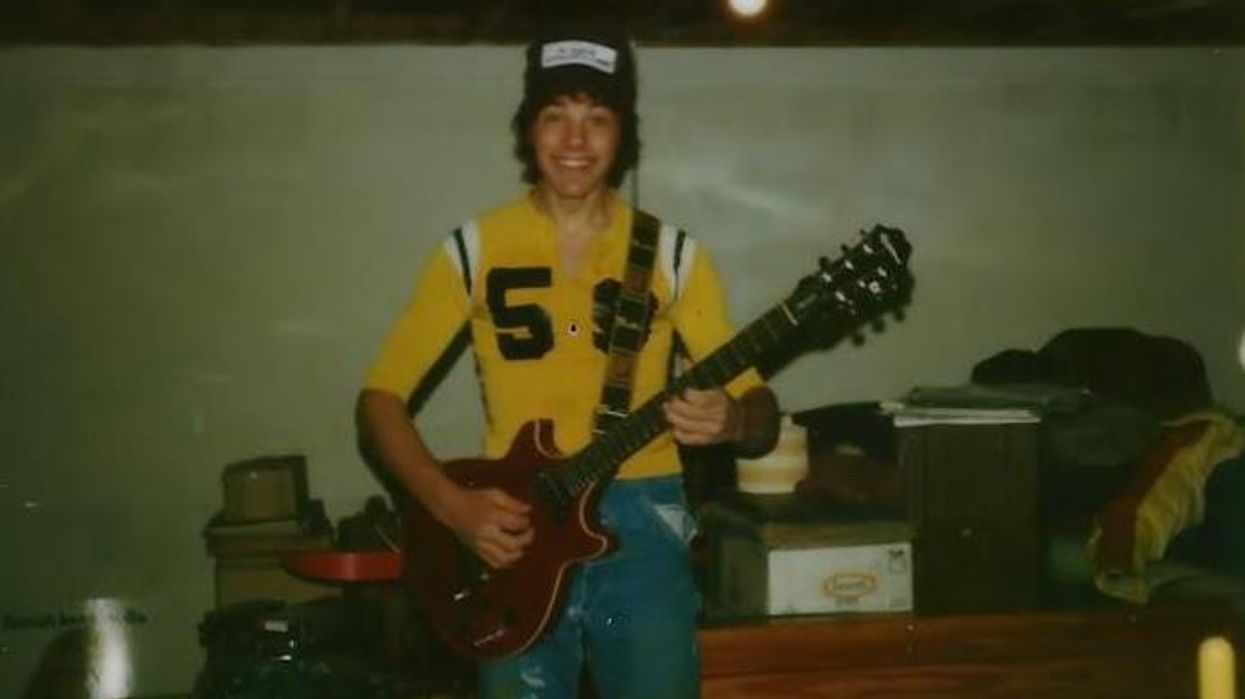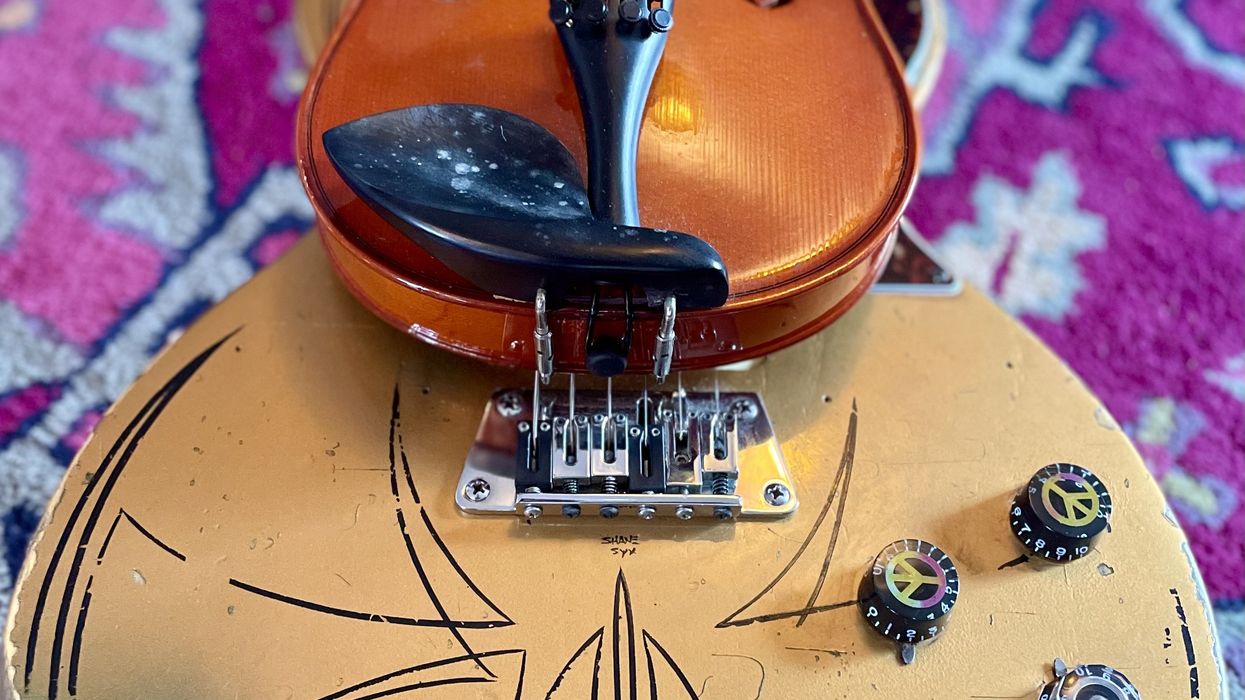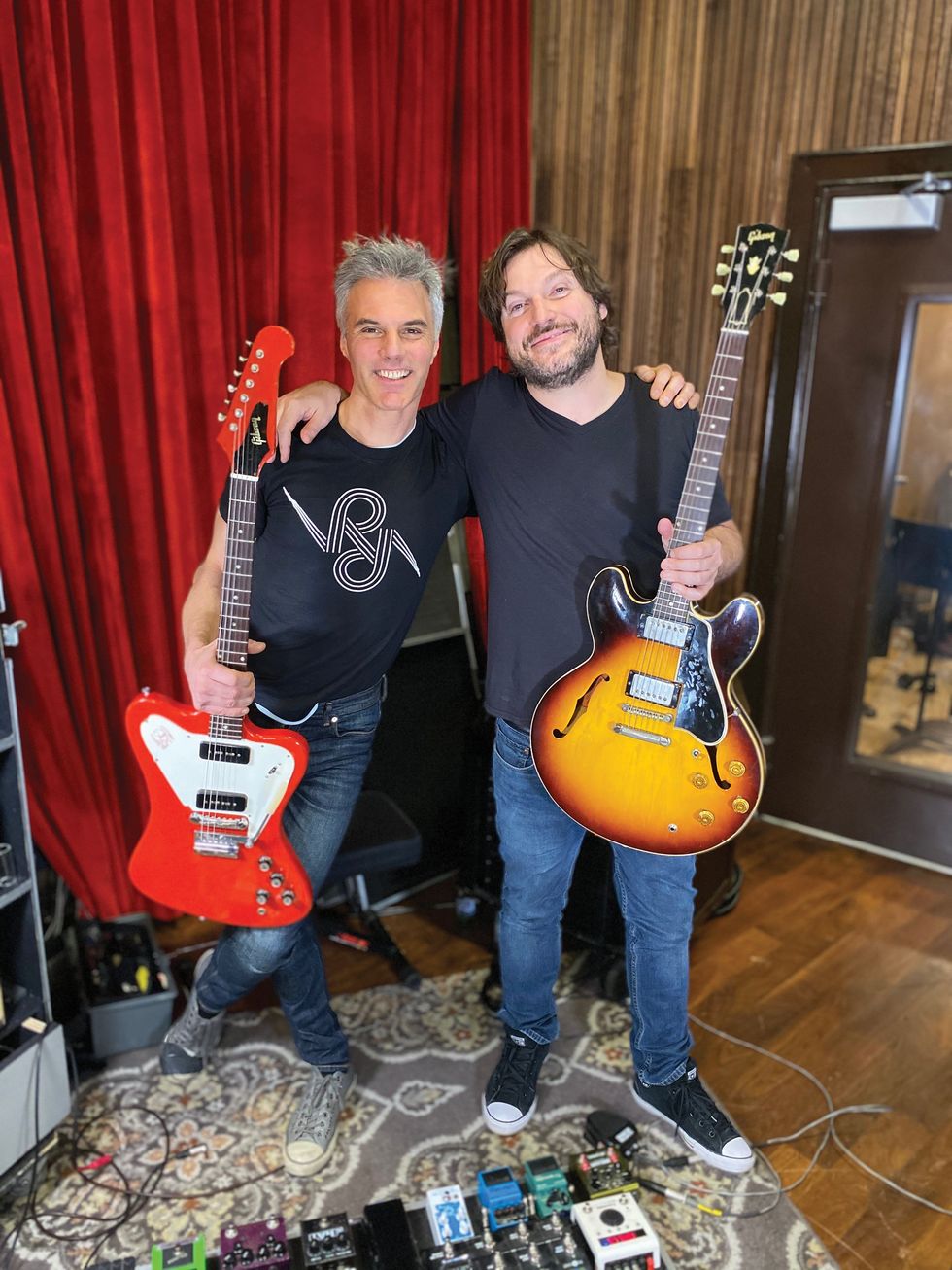The great Billy Sheehan once said that playing bass is a full-contact sport. I love that statement. To move air, we deal with bigger strings, higher action, and larger equipment than our guitar-playing brethren. It’s just more physical … period.
For us bassists, it’s also an ongoing challenge to bring the same precision to the stage that we’re used to in the recording studio or band practice. Playing well live is a personal obsession and passion of mine. But being a performing bassist is what I dreamt of as a child, and it still makes up about 75 percent of my work. The challenges of playing onstage range from artistic to physical.
Standing up and strapping it on. When we practice sitting down, the bass is on our lap. If you grab your bass and hold it exactly where it rests on your torso while in the sitting position, and then slowly stand up, you’ll see that you end up with the bass very high on your body. This may not be a cool look, but it’s where all your hard-earned muscle memory is.
Personally, I compromise between this position and a more low-slung, rocker look: It’s high enough to where I can accurately execute my parts, yet low enough that it still looks “right.” I use a strap that has a little bit of give and moves with me when I move onstage, but it doesn’t move enough to where the bass feels like a yo-yo. Finding the right position for your bass, and finding the right strap for your body and live-performance style are huge decisions.
The recorded part versus your personal interpretation. It’s no secret that preparing for a live show with a new artist requires plenty of practice to learn the songs well. After quite a few years of playing for major-label acts based here in Nashville, I’ve developed a song-performance approach that varies according to what different types of artists typically prefer.
For instance, many female artists in the modern-country genre lean in the pop direction, and they seem to be more comfortable if the band honors the original parts. Hearing signature licks and setups for certain phrases or sections of a song can provide confidence and familiarity in a live setting.
I’ll generally honor the album parts for the first few shows of a tour and play the same fills as the record. But after a handful of shows, I’ll often add my own flavor to certain licks. Judging by either the positive or confused reaction of the artist, I’ll know whether or not it’s okay to dig deeper and get more adventurous creatively.
I’ve found that an artist’s age is also a factor in how far a bassist can stretch. Older artists are generally a little more lenient in my experience, regardless of musical style and gender.
Male artists in the modern-country genre (where I make a large part of my living) tend to lean a little more toward classic rock than pop. I have quite a different approach when bringing their albums to a live setting. I usually aim for a bigger, rounder tone than what’s on their recorded songs to achieve a little bit of intentional “live sloppiness.” These artists often want their live act to be more of a house party, so I’ll sometimes simplify certain sections to make sure I can entertain well. This approach also helps the FOH engineer provide a tight mix.
The physical aspect. I recently caught Bruno Mars in concert, and his bassist Jamareo Artis brought high energy, grooves, and furious licks for two hours straight. He reminded me of Verdine White, the non-stop show-machine from Earth, Wind & Fire. The ramp in front of the stage—an area usually reserved for a lead singer—was used almost exclusively by Artis during the first three songs. I was simply blown away by his ability to maintain such an energy level for the duration of the show, while still providing world-class playing.
I am a big fan of “show bands” like Bruce Springsteen and the E Street Band, Prince, Sam & Dave, and James Brown. It’s no coincidence that acts like these are older, because true show bands are unfortunately a dying breed. Most of today’s stars rely on dancers, video screens, and various other production tricks to deliver what they consider to be a larger than life show. A show band will keep the undying attention of an audience by showcasing the interplay between the bandleader and the musicians, demanding participation from the crowd, and by having the entire band match the energy level of the front man.
As bassists, our full participation in the show and successful execution of the show-band concept is made more difficult because we play all the way through most of the songs as a general rule. Guitarists and keyboardists generally get breaks in songs. Bassists also have to be more concerned with the evenness and consistency of attack than other players in the band. Try playing even eighth-notes while jogging across the stage or while doing simple choreography. It’s very hard, but not impossible.
Though it’s not discussed as often as it should be, physical fitness is key here. Eating right and going to the gym is an incredibly important factor for the professional success of a performer. There is no way Bruno Mars’ band members could maintain their level of energy if they weren’t in shape. Adrenaline is certainly a factor too (I know because I’m an adrenaline junkie), but it can only carry you for so long. Adrenaline can also impair your precision.
It’s true that there have been great performers who were out of shape. But to consistently perform live at the very highest level, physical fitness is an absolute requirement in order to last long enough to give the audience more than what they paid for. And that’s the definition of our job, right?
Until next time, keep up the hard work in the woodshed and be sure to keep taking care of yourself too!











![Rig Rundown: Russian Circles’ Mike Sullivan [2025]](https://www.premierguitar.com/media-library/youtube.jpg?id=62303631&width=1245&height=700&quality=70&coordinates=0%2C0%2C0%2C0)



![Rig Rundown: AFI [2025]](https://www.premierguitar.com/media-library/youtube.jpg?id=62064741&width=1245&height=700&quality=70&coordinates=0%2C0%2C0%2C0)




